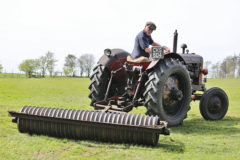Lifeboat tractors
Posted by Chris Graham on 7th June 2021
The RNLI looks back at the lifeboat tractors used a century ago, and the important contribution they made to the saving of lives at sea.
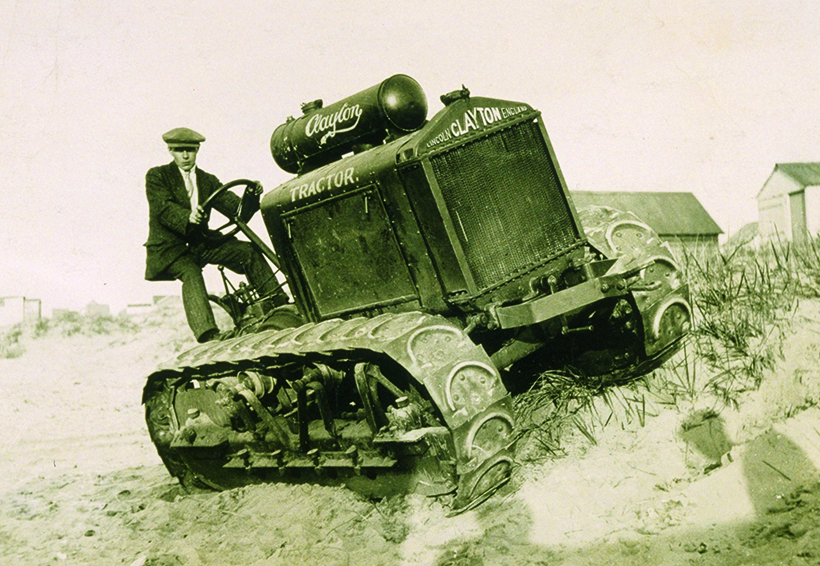
Lifeboat tractors: Hunstanton Clayton tractor on sand dune trials in March, 1920.
RNLI lifeboats often take centre stage in rescues; however, many can’t launch without lifeboat tractors and the dedicated shore crew. Operators often launch the lifeboat in raging seas and darkness, and a safe, quick launch can make the difference between life and death. The lifeboat and crew might get the public’s attention, but the tractor and the shore crew are the unsung heroes who more than pull their weight – quite literally.
Important centenary
This year marks 100 years since the RNLI introduced tractors to launch its lifeboats and the technology nowadays – with the very latest Shannon Launch and Recovery System (SLRS) – is unrecognisable to all those years ago.
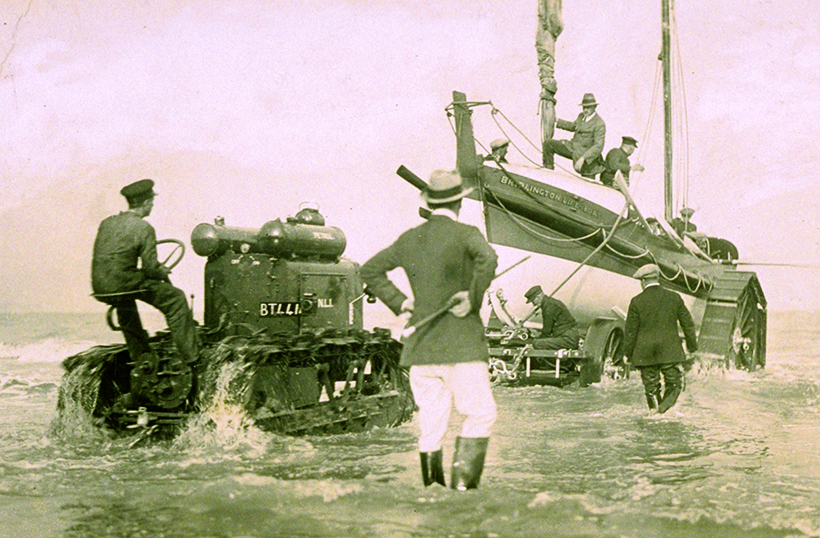
Bridlington lifeboat Self Righter class ON 433 George and Jane Walker being launched by Clayton & Shuttleworth tractor, in 1922.
Before the Twenties, it wasn’t unusual to see horses pull lifeboats through local communities to reach a point where they could safely be launched.
In 1920 a 35hp Clayton Caterpillar tractor was trialled at Hunstanton Beach, in Norfolk over flat sands, sand dunes and rocky ground. Despite the tractor once becoming submerged in water, the launch was successful using only crew and four helpers, where under ordinary conditions such a launch would require eight or ten horses and as many helpers.
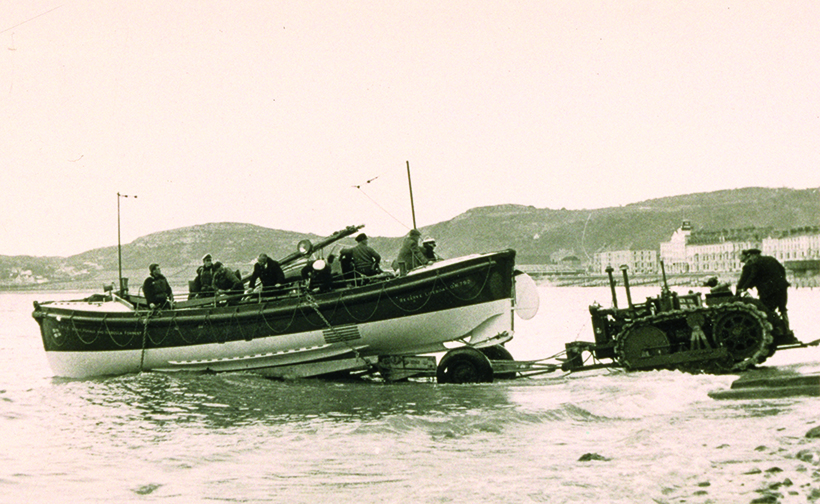
Liverpool Motor class Annie, Ronald and Isabella Forrest on the trailer in shallow waters with Case L tractor.
Adapt and develop
A year later, the RNLI had purchased 20 of the tractors, adapted and distributed them to stations. By 1928, the 4wd tractor with a 60hp petrol engine, which could cope with steep shingle beaches, was also in service.
Working jointly with engineering companies to adapt agricultural tractors, over the years the RNLI introduced new, more powerful, and waterproof tractors to launch lifeboats quickly and safely.
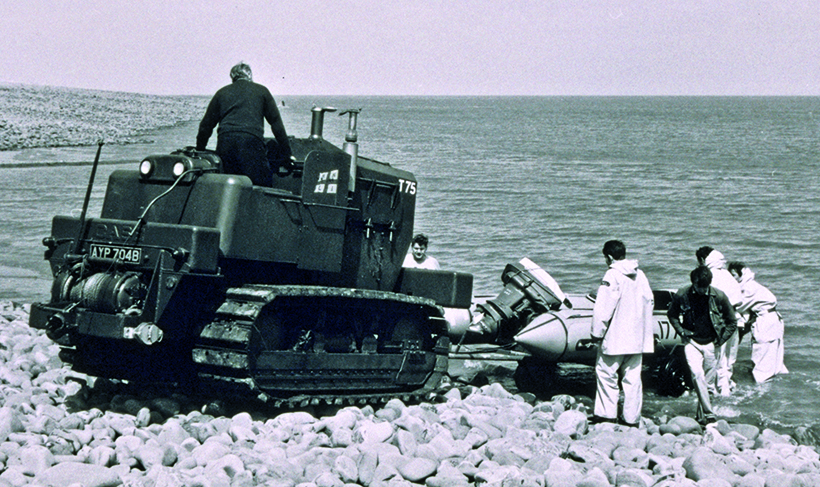
The recovery of the new Minehead D class inshore lifeboat, using standard Case 1000 lifeboat-launching tractor.
By the late Forties, 16 Case L tractors had been built and, in the Fifties, the Challenger III diesel crawler tractor was constructed, powerful enough to meet the demands of launching the heavy 11m Oakley class lifeboat. The Sixties and Seventies saw more Case tractor models, including the Case 1150 tractor with a watertight cab and some with a bulldozer blade to flatten beaches.
Modern developments
In the Seventies, the first of the Talus tractors were brought in to launch inshore lifeboats. Then in the Eighties, earlier tractors began to be replaced by the Talus MB-H, a vehicle designed jointly with Mike Bigland (Preparations) Ltd. It was the first vehicle to be purpose-designed for launching lifeboats, rather than being an adaptation of an existing tractor design.
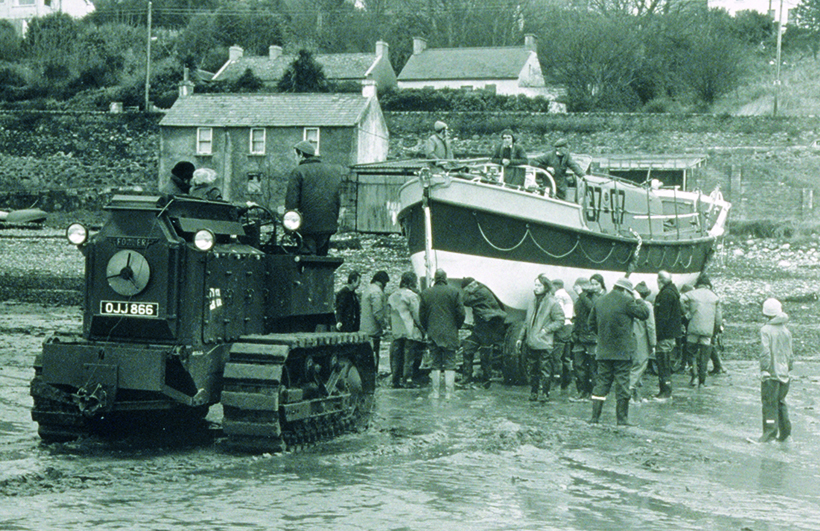
Newcastle (Down) ON 974 Oakley class Jane Hay on the beach with Fowler crawler during trials.
In 1990, the Talus MB-4H, powered by a 105hp turbo diesel engine, was developed. Known as the ‘bendy’, it launches B class inshore lifeboats. There’s also the Talus MB-764, which is based on a Ford County tractor with a watertight shell that launches both B class and D class lifeboats. Softrak and Tooltrak vehicles, and the Haegglund BV also launch inshore lifeboats.
RNLI Machinery Trainer Mark Perry said: “The RNLI have progressed not only the development of lifeboats over the years but also the launch and recovery systems associated with the new boats.

ON 833 Liverpool motor class, The Cuttle, being launched by tractor at Skegness.
“Volunteers training on the new equipment will spend in the region of 40 hours conducting basic training and learning the full extent of all its capabilities – it’s certainly come a long way since the first tractor was introduced 100 years ago.”
RNLI key facts
The RNLI charity saves lives at sea. Its volunteers provide a 24-hour search and rescue service around the United Kingdom and Republic of Ireland coasts. The RNLI operates over 238 lifeboat stations in the UK and Ireland and, in a normal year, more than 240 lifeguard units on beaches around the UK and Channel Islands. The RNLI is independent of Coastguard and government and depends on voluntary donations and legacies to maintain its rescue service. Since the RNLI was founded in 1824, its lifeboat crews and lifeguards have saved over 142,700 lives. To support RNLI lifesavers, please visit: RNLI.org/GoDonate
For a money-saving subscription to Tractor & Farming Heritage magazine, simply click here.



